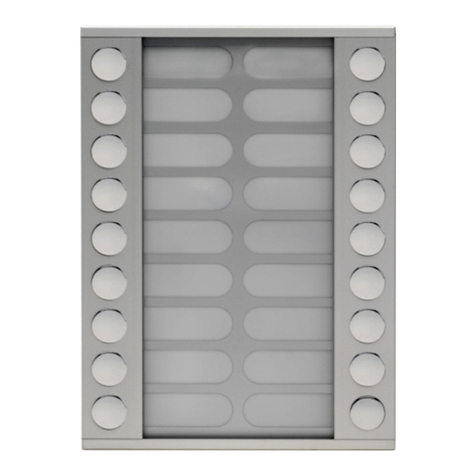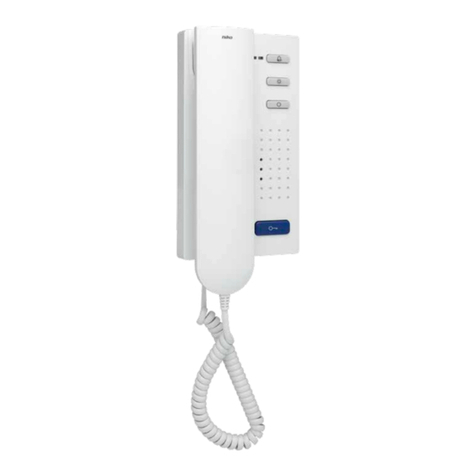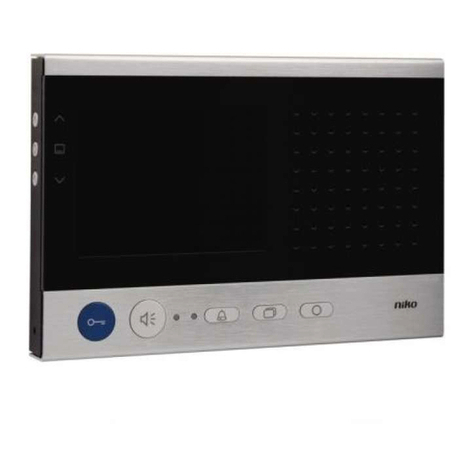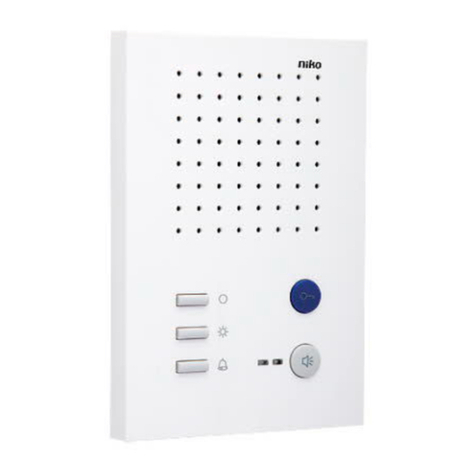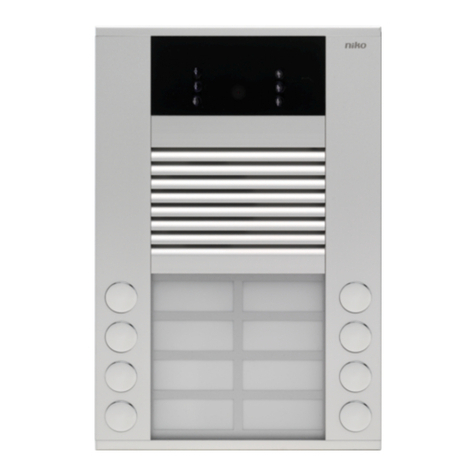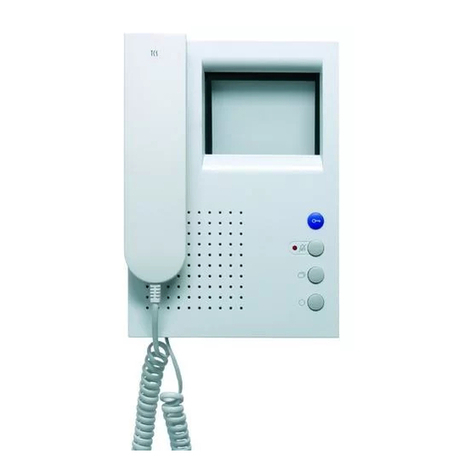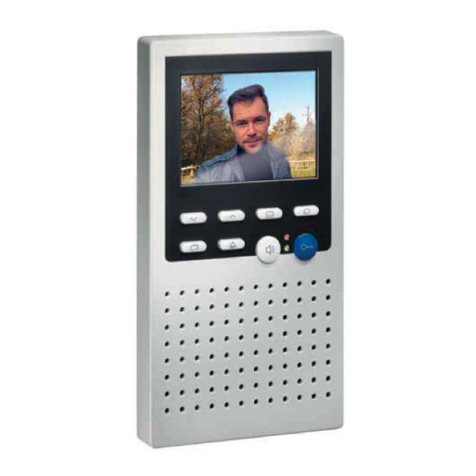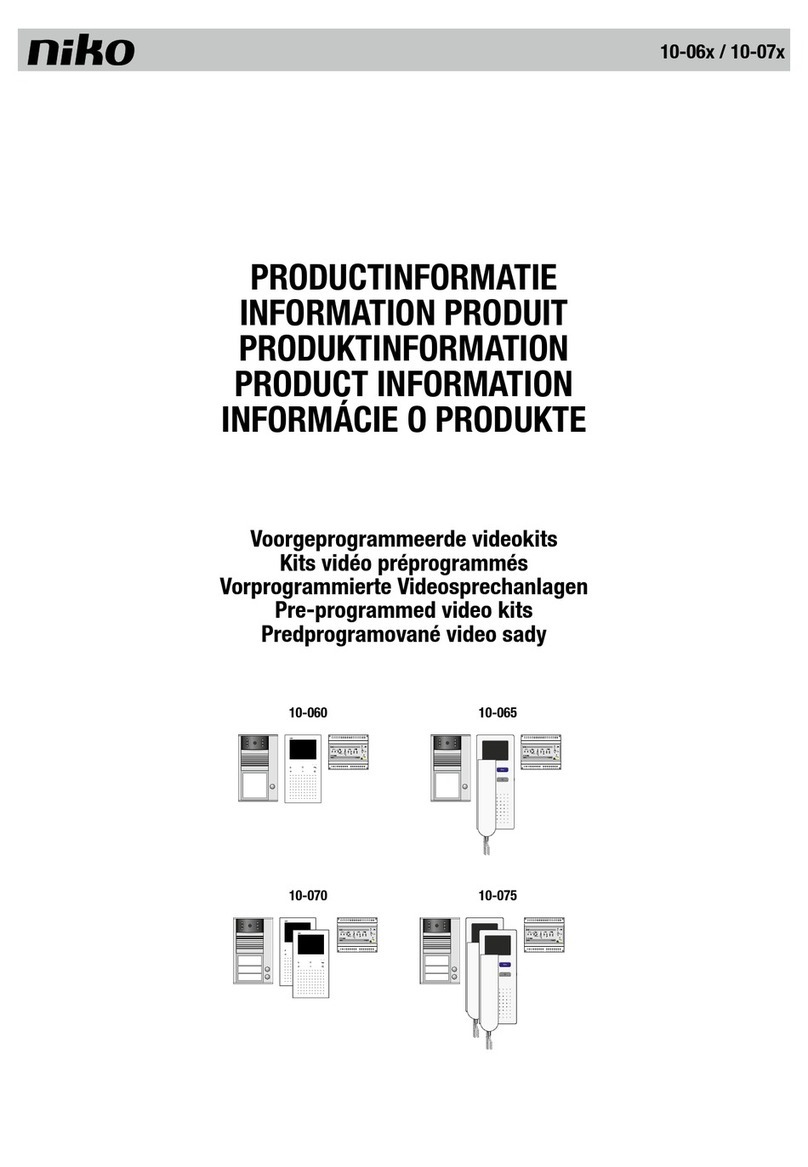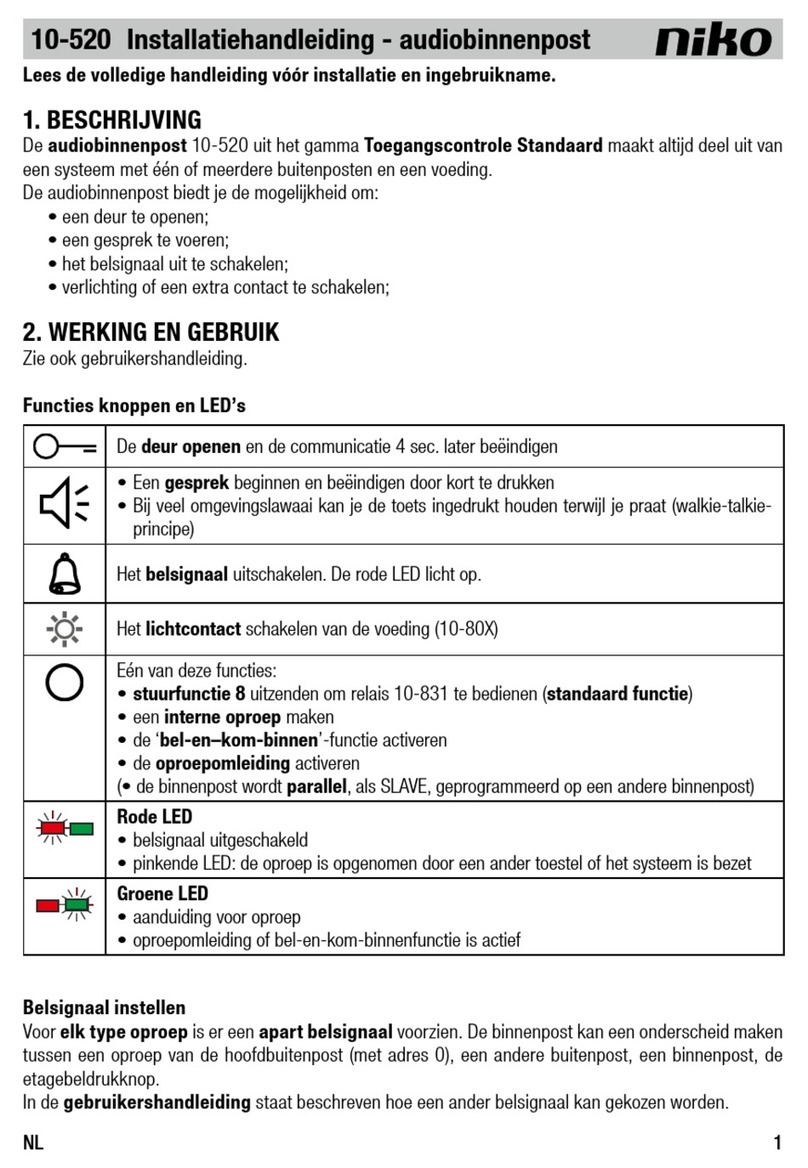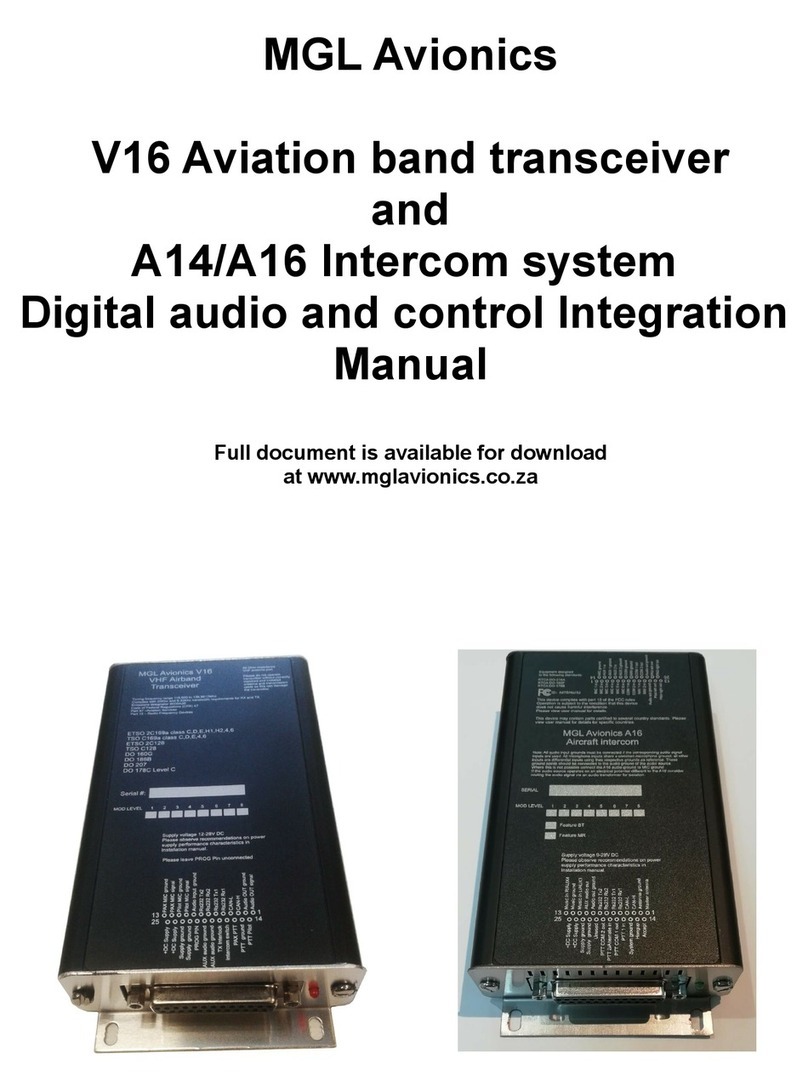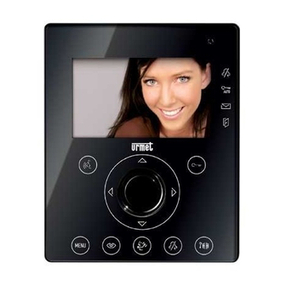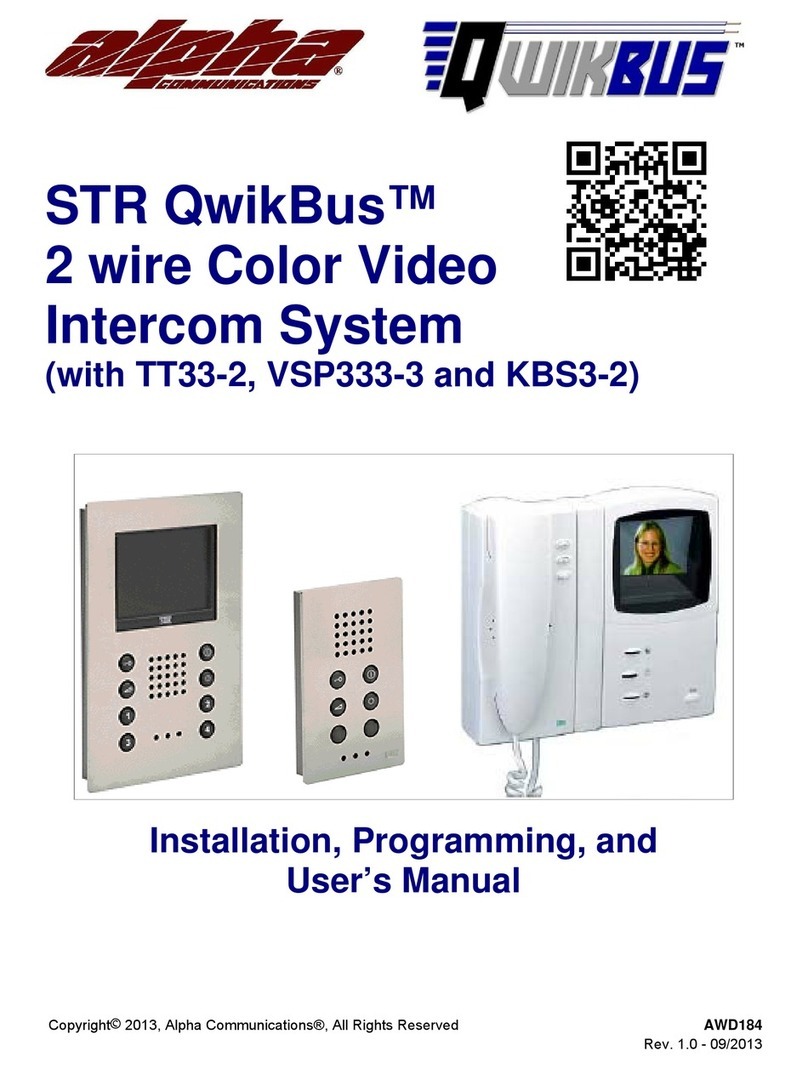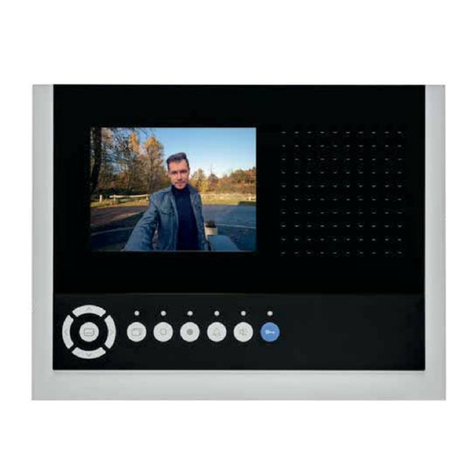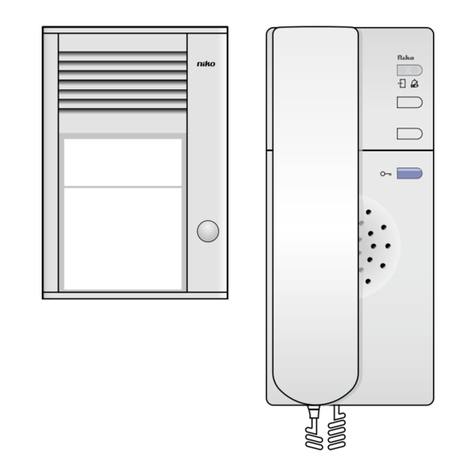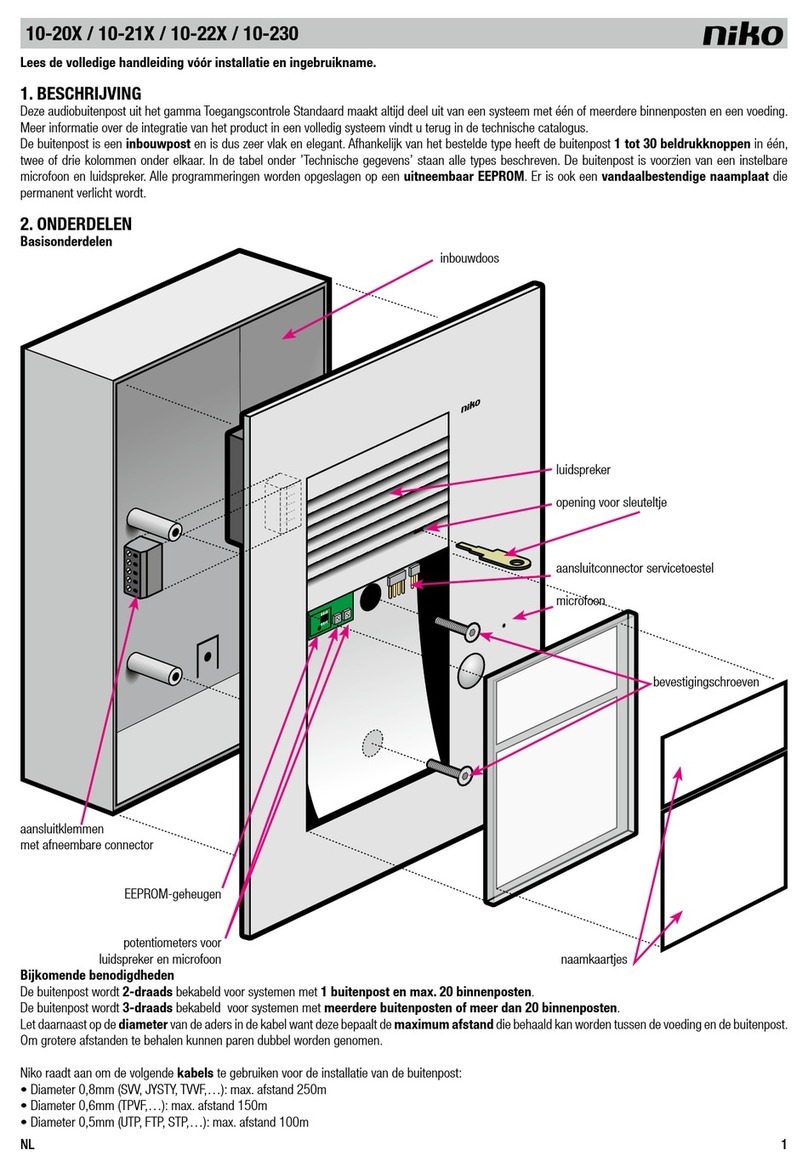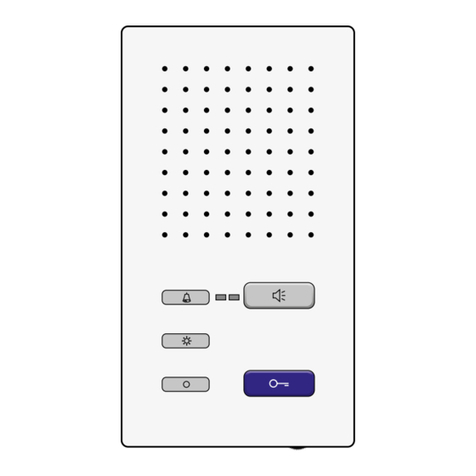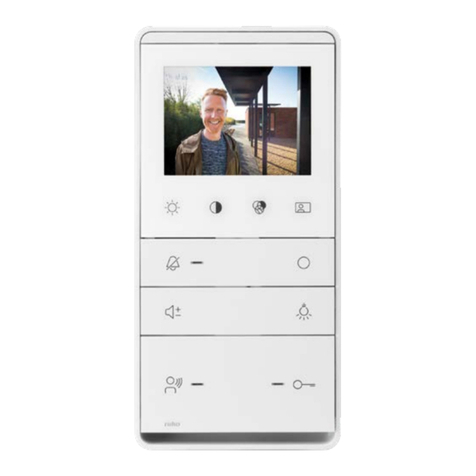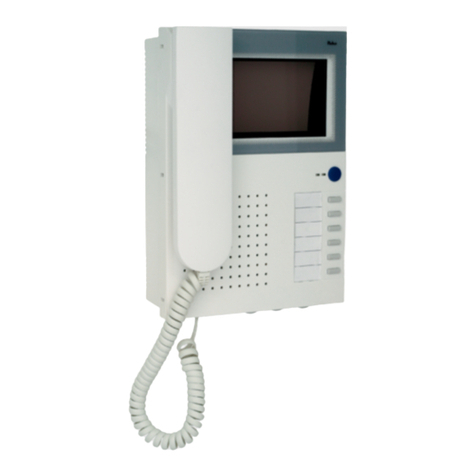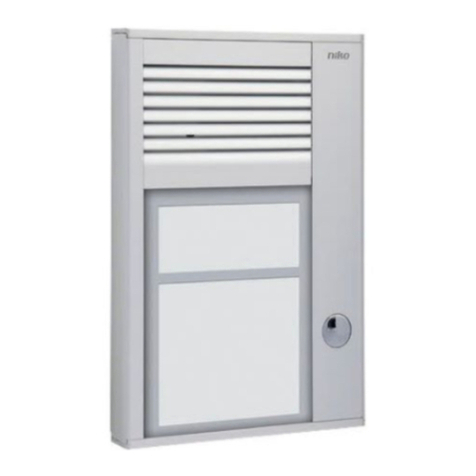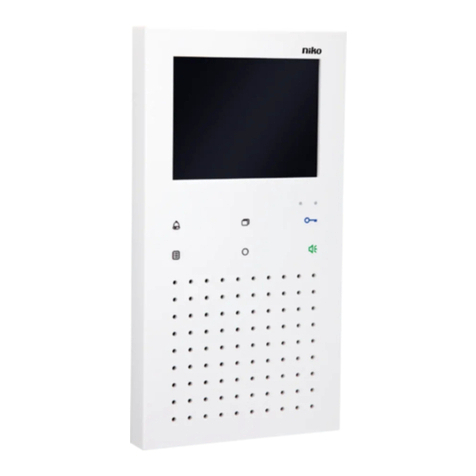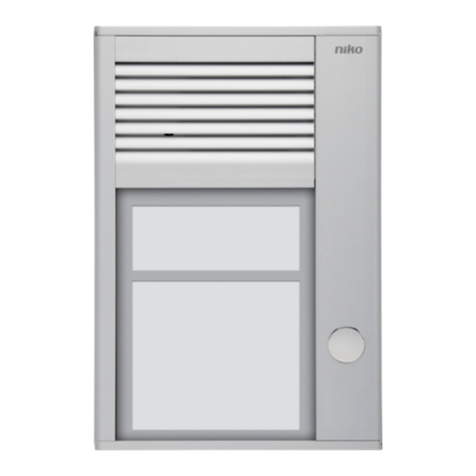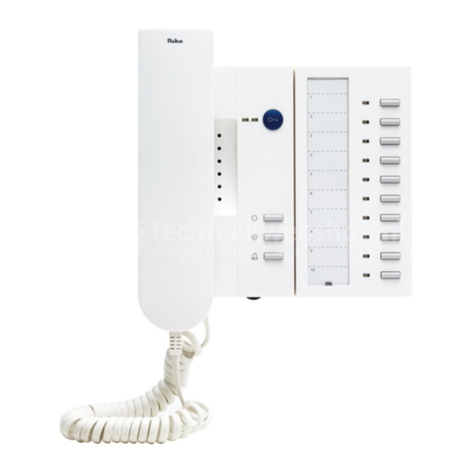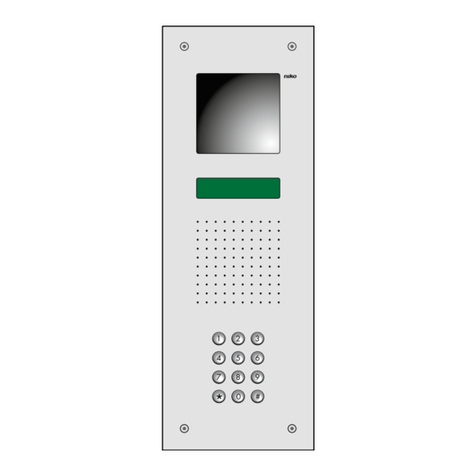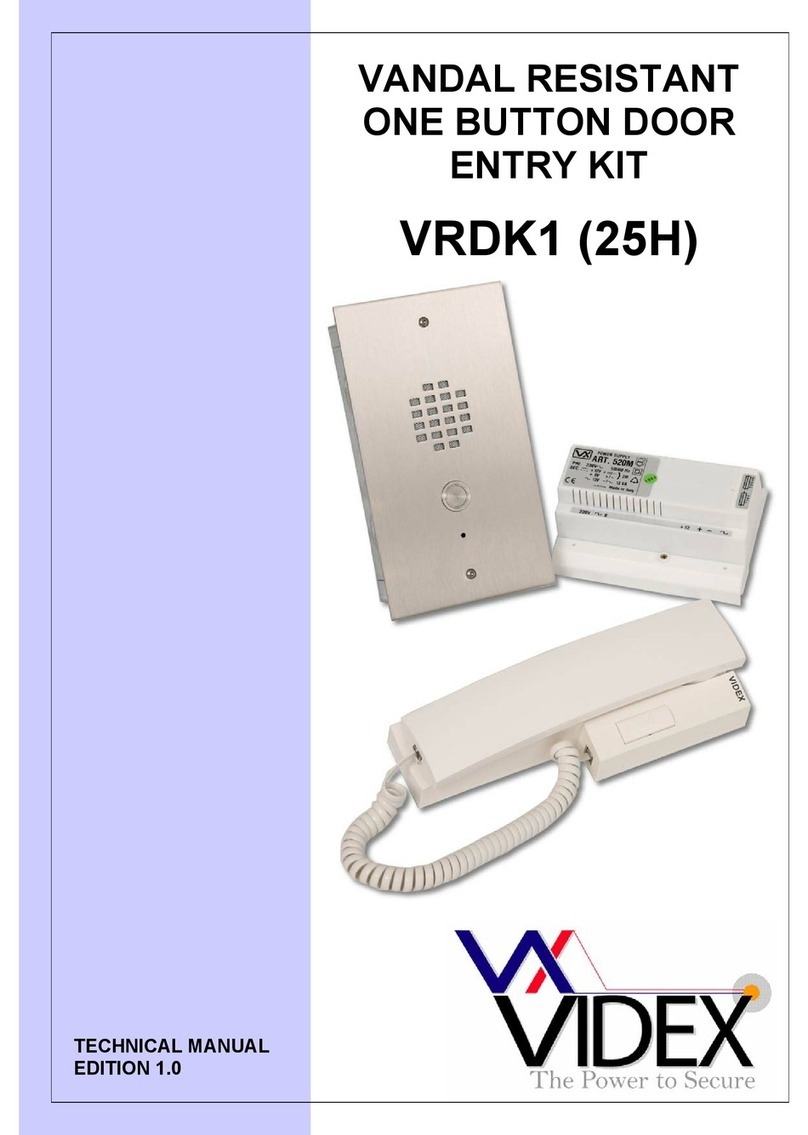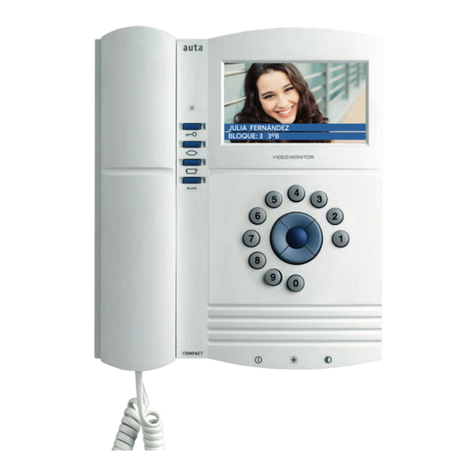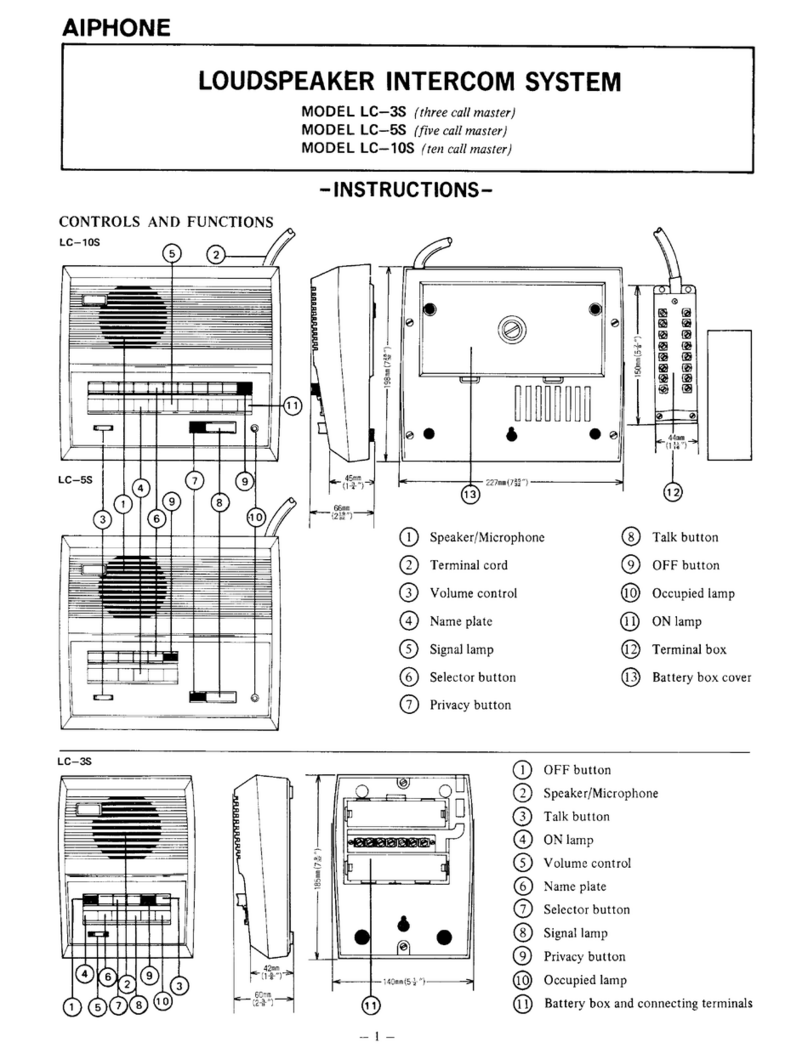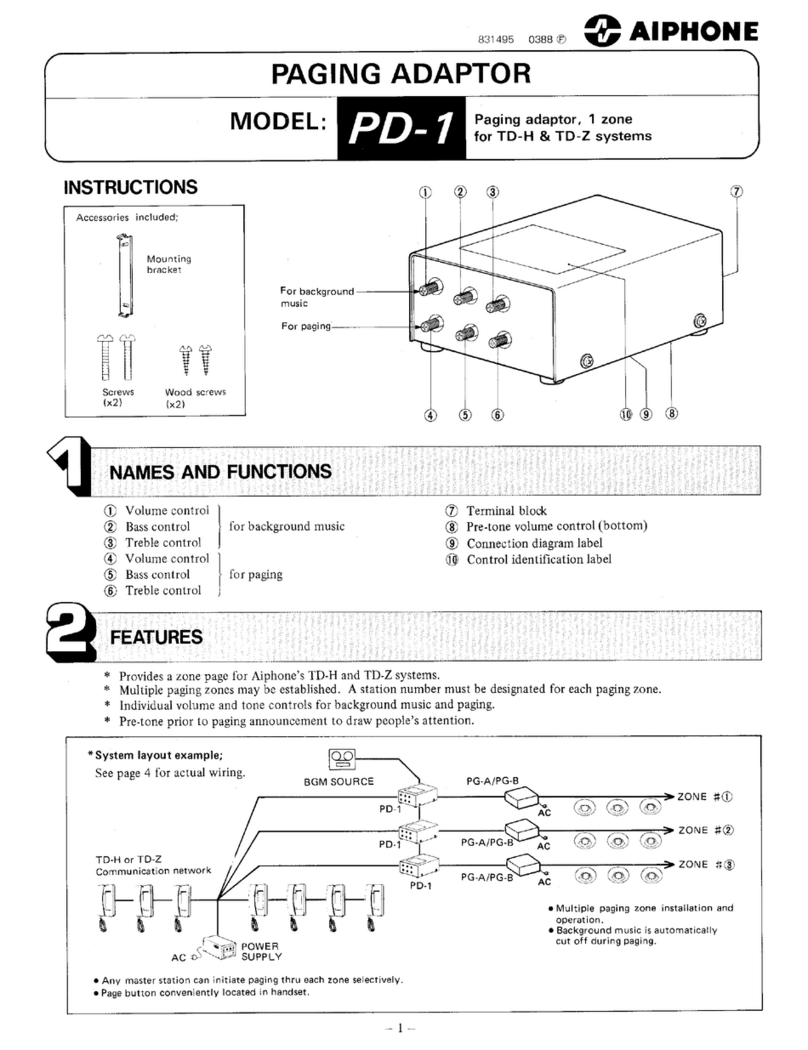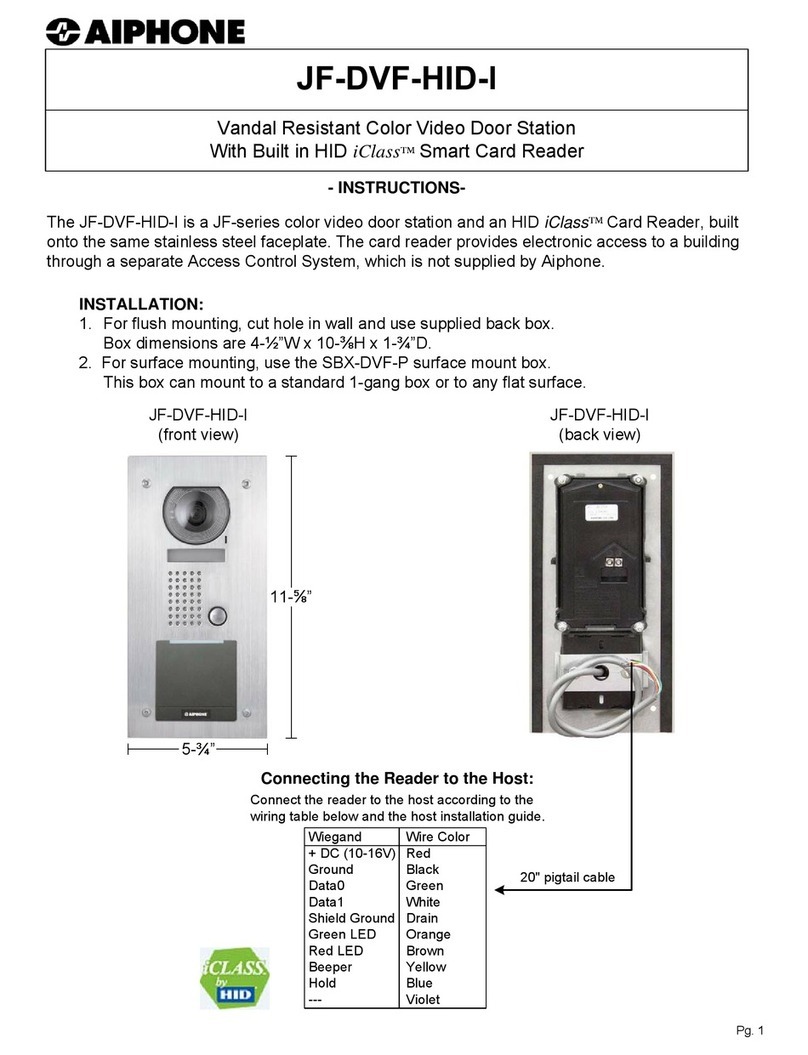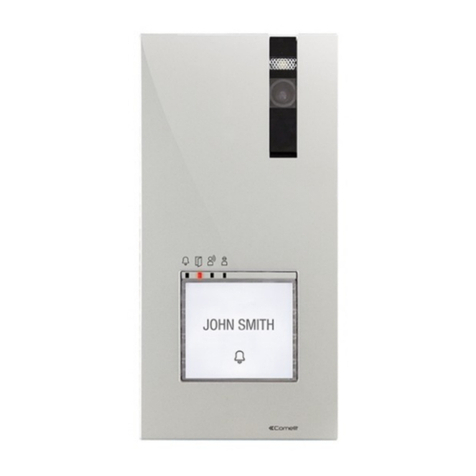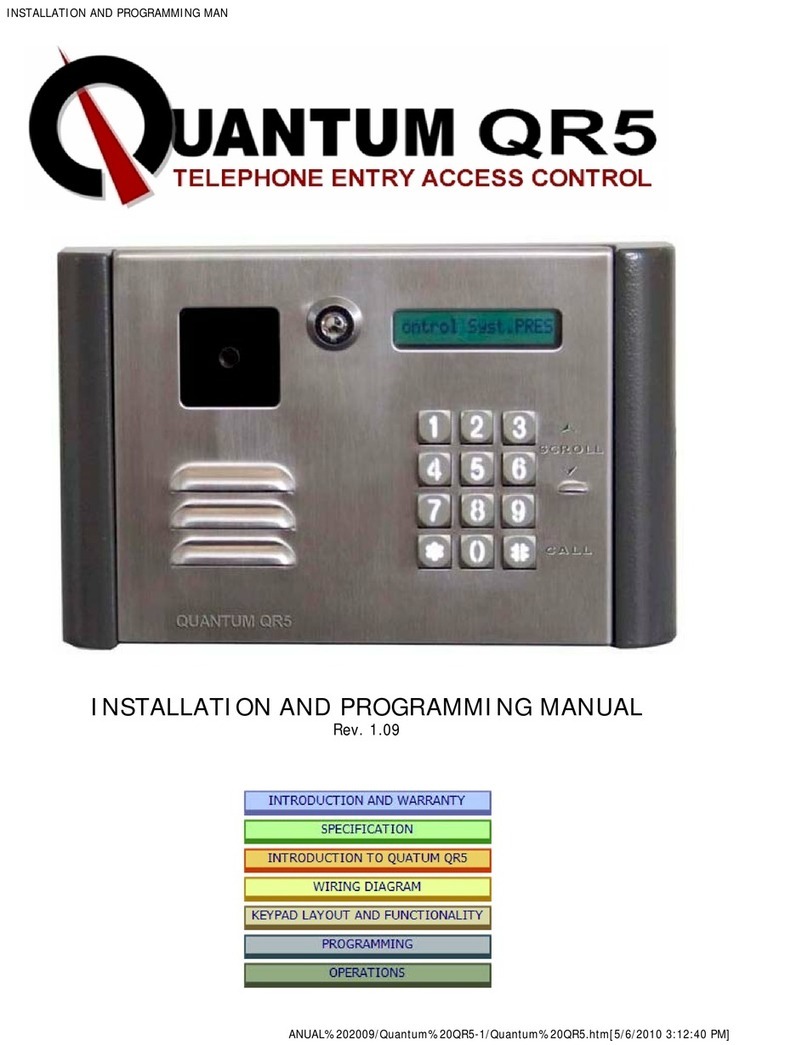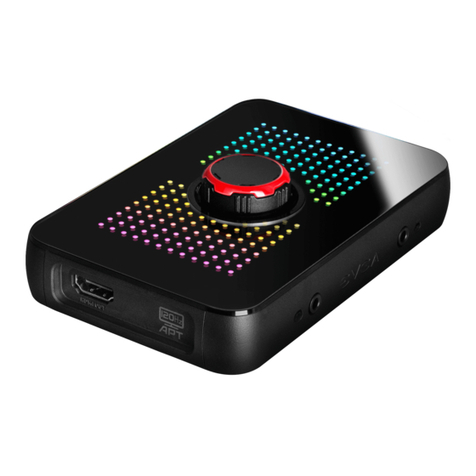
10
10-589
Régler les temps
Les temps suivants sont programmés en standard:
Temps de parole après le début d’une conversation 2 min
Temps de parole après l’ouverture de la porte 4s
Durée où l’image caméra demeure activée 80s
Nombre de fois où la LED rouge clignote lorsque le vidéophone est occupé 5 fois dans les 10s
Nombre de fois où la LED rouge clignote lorsque le canal vidéo ou conversation est occupé 3 fois dans les 6s
Durée au cours de laquelle un appel d’un poste extérieur ou d’un bouton de sonnerie d’étage reste signalé 2min
Durée au cours de laquelle est appel interne lancé par vous-même demeure signalé 30s
Durée au cours de laquelle une fonction de commande d’un relais demeure active 30s
Durée au cours de laquelle vous pouvez modifier des réglages après activation 8s
Vous pouvez également régler d’autres temps via
• l’alimentation
Pour de plus amples informations sur la programmation via l’alimentation, voir le manuel de l’alimentation.
• l’appareil de service
Pour de plus amples informations sur la programmation via l’appareil de service, voir le manuel de l’appareil de service (10-870).
• le relais
5. DÉRANGEMENTS
En cas de problèmes, contrôlez toujours d’abord à l’aide d’un multimètre si les tensions suivantes sont présentes:
• entre b et a: environ +24VDC;
• entre b et P: environ +24 VDC;
• entre M et P: environ +24VDC;
• entre M et V1 ou V2: environ +5VDC.
Vous trouverez ci-dessous une liste de problèmes possibles, avec leurs causes et leurs solutions.
Problème Cause Solution
Vous entendez une tona-
lité négative lorsque vous
appuyez sur .
La programmation est erronée. Effacez la programmation et recommencez-la.
Le système se trouve encore en mode
programmation.
Quittez le mode programmation.
Le poste intérieur vidéo n’est pas rac-
cordé correctement.
Contrôlez le câblage.
Deux fonctions sont attribuées à la
touche.
Si une conversation est entamée, le relais se commute pour ouvrir la porte.
Si aucune conversation n’est commencée, le relais d’éclairage se commute.
L’image sur le poste intérieur
vidéo n’est pas claire.
Les conducteurs V1 et V2 sont permutés. Permutez les conducteurs V1 et V2.
Le câble n’est pas adapté:
• la distance de câble est trop grande;
• le câble est dégradé;
• le câble a une section trop mince;
• le câble n’est pas torsadé.
Remplacez le câble actuel par un câble approprié.
L’amplification sur les répartiteurs n’est
pas correctement réglée.
Réglez l’amplification sur les répartiteurs à l’aide des potentiomètres.
Aucune image n’apparaît sur
le poste intérieur vidéo. Les
autres fonctions fonctionnent
correctement.
Le câblage n’est pas raccordé cor-
rectement:
• M ou P manque;
• V1 ou V2 n’est pas raccordé.
Contrôlez le câblage (voir schéma de raccordement).
Les cavaliers ne sont pas configurés
correctement.
Disposez les cavaliers correctement sur les contacts (voir le chapitre
Montage)
Aucun son n’est transmis sur
le poste intérieur vidéo.Seule
l’image est transmise.
Le câblage n’est pas raccordé cor-
rectement.
Contrôlez le câblage (voir schéma de raccordement).
FR
